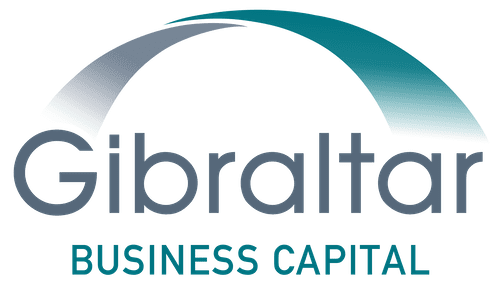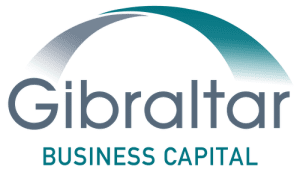Inventory is one of the most important categories of business assets that can be used as collateral for an asset-based loan. When you’re planning to apply for this type of alternative financing, it’s helpful to have some perspective on how your asset-based lender (ABL) looks at the value of your inventory for use as collateral.
How Inventory is Valued in Setting Your Borrowing Base
The quality and liquidity of eligible collateral is essential to a lender’s decision to extend credit. Collateral appraisals are important aspects of ABL underwriting, administration, and loan management.
Asset-based lenders will likely appraise your eligible inventory during the underwriting process to determine its “net orderly liquidation value.” Your borrowing base or loan limit will be established as a percentage of the appraised value. The percentage—also known as your advance rate—is generally around 50% for inventory. Advance rates on inventory tend to be lower than those on receivables, because inventory is less liquid. However, your specific advance rate can grow or decline from the baseline based on a number of factors, including your general inventory management practices and your ABL’s level of expertise with your type of inventory.
Before you talk to an ABL, you should assemble a list of the inventory you have, where it’s stored, and its approximate value. These documents can help get the conversation about your potential financing started, although there will be a significant amount of due diligence required before your loan can close.
Your ABL will obtain updated appraisals throughout the life of the loan to monitor your inventory value and inventory trends. The frequency of these reappraisals will be outlined in your loan agreement. Their frequency may increase if issues arise.
The 3 stages of Inventory—Which is Most Valuable?
Retailers’ and wholesalers’ inventories generally consist entirely of items ready for sale. However, a manufacturing company’s inventory will include goods in three stages of production—raw materials, work-in-process and finished goods.
Finished goods and commodity-like raw materials usually receive the highest advance rates because they are easiest to sell. Finished goods are considered the most liquid collateral since they are likely to have a larger potential market. Advance rates for finished products with established markets are normally higher than those for specialized or perishable goods. For raw materials, also, commonly used commodity items are easier to resell and earn higher advance rates than customized items.
Work-in-process has limited liquidation value because it requires more work and time to become salable merchandise. For this reason, it may be excluded from the collateral used to set your borrowing base.
The Impact of Inventory Management
You ABL will not only be appraising and reappraising your inventory value, but also will be looking at your best practices in regard to inventory management. How well you are managing your inventory to create profit for the company is an important factor in setting your specific advance rate.
As part of their overall management assessment, your ABL will look at your: inventory turnover rate and trends, practices for dealing with slow-moving inventory, quality of reporting, reconciliation process, supplier relationships, the physical location of your inventory and landlord relationships, when applicable. Any of these factors can move your advance rate up or down, depending on how well you are addressing them. Many business owners do not realize how important management practices are, but they can even affect whether certain inventory categories are considered “eligible” or “ineligible” in the total, before advance rates are applied to calculate your borrowing base.
Fair Market Value Vs. Orderly Liquidation Value
An ABL typically relies on appraisals that use NOLV (net orderly liquidation value) as the standard for collateral valuation. Orderly liquidation value is an opinion of the gross amount the inventory would bring during an organized sales process that occurs over a relatively short period of time. The term “orderly” implies that the liquidation would allow for a reasonable time to identify all available buyers, and the seller would be in control of the sale process.
There are other valuation methods, including fair market and cost valuations. Retail prices are generally based on fair market value, which is defined as the price at which the product would sell in the open, free market where buyer and seller are knowledgeable and motivated, but are feeling no time or other pressures. Valuation via the cost method is commonly used to evaluate inventory for a company’s balance sheet.
Each of these forms of inventory valuation is appropriate for specific situations. Although asset-based lenders tend to rely on NOLV, it’s important to understand that the valuation method they select for setting your borrowing base could differ. Given how critical the value of your assets is in this type of financing, your ABL will evaluate the best method or methods to use for your industry and circumstances.
How to Maximize Your Inventory’s Value
There are two basic ways to maximize the value of your inventory. One is to put processes and strategic plans in place to ensure efficient management. For ideas on how to do this, read our blog post on how inventory management can affect the size of your loan.
The other way is to select an asset-based lender who is knowledgeable about your industry and the true value of your specific inventory. An ABL who understands your company and its assets is more likely to give you the best terms on your loan.
At Gibraltar, we have experience in a broad range of industries. And our ABL experts always take the time to understand your company and its specific situation, so we can develop responsive and innovative solutions to your financing needs. Talk to a member of Gibraltar’s professional and experienced sales team to learn more about how your inventory can help you access financing to grow your business.


